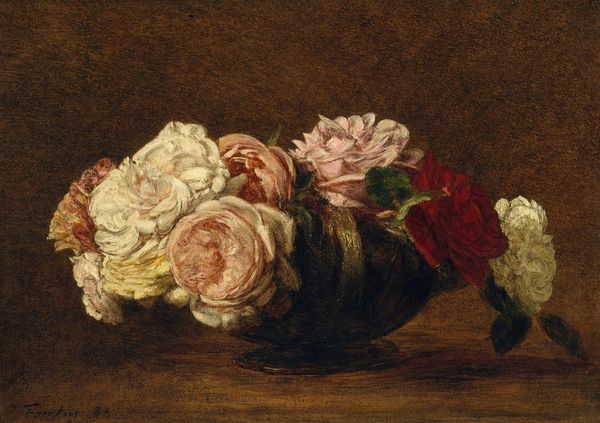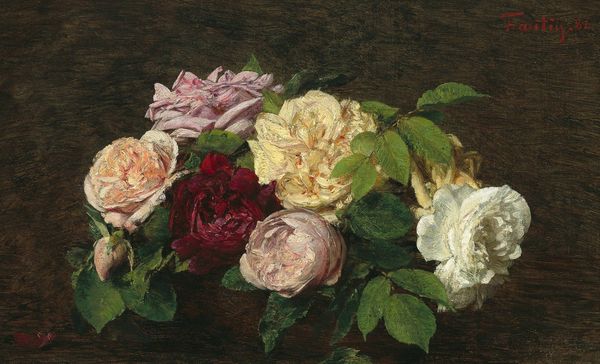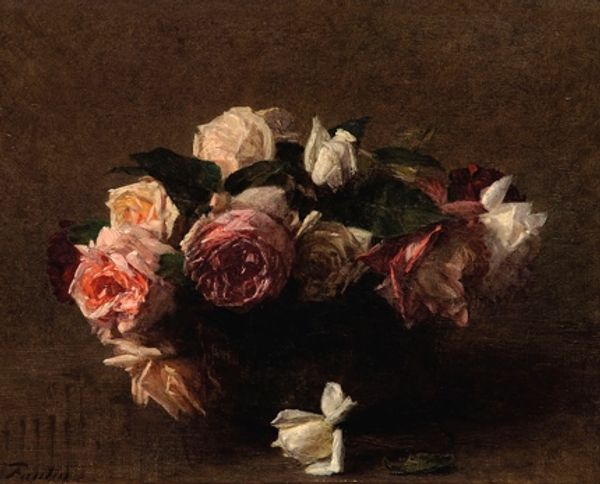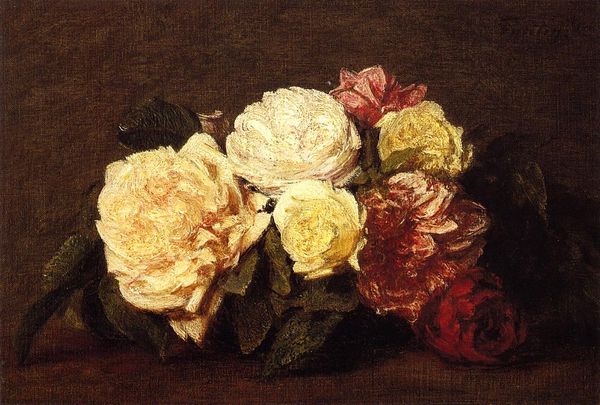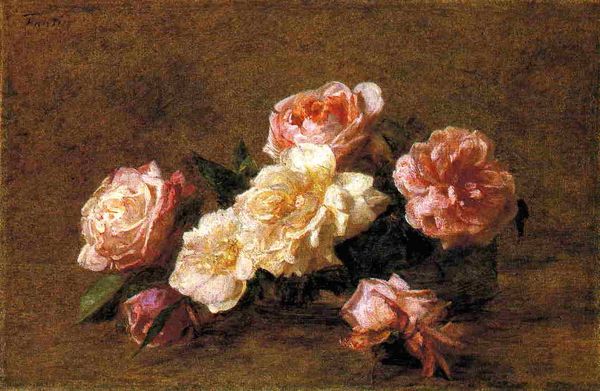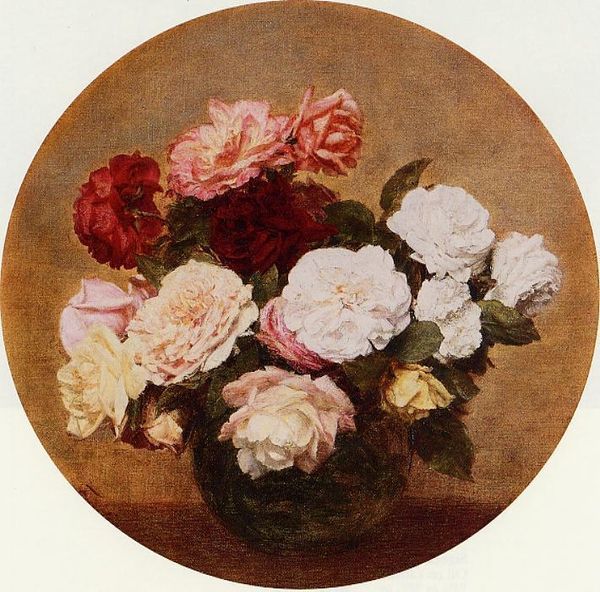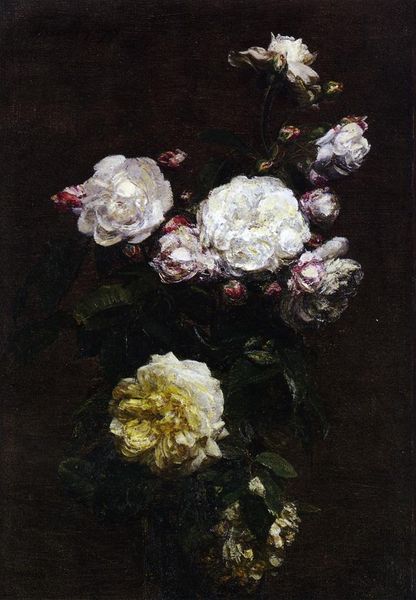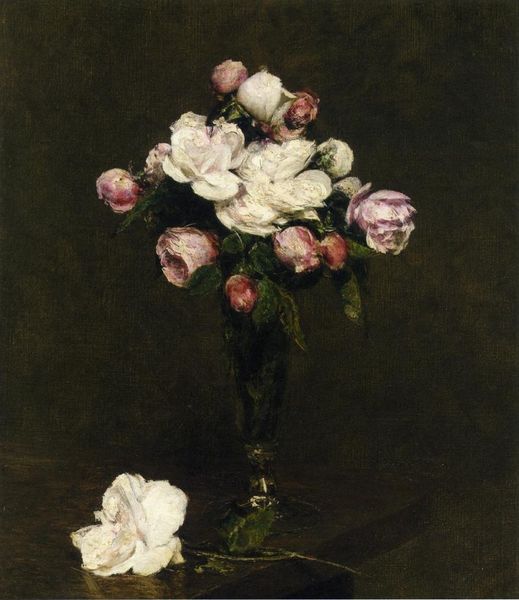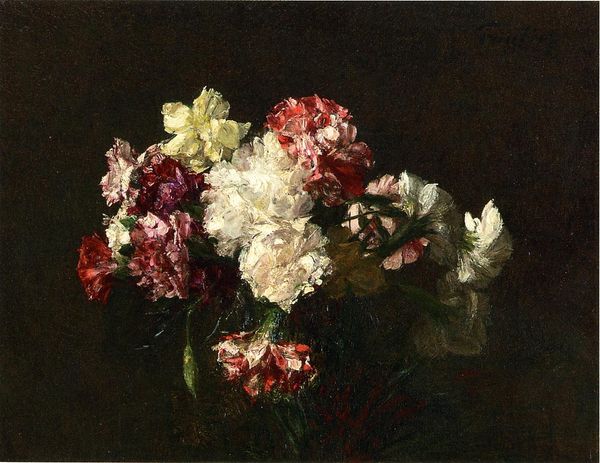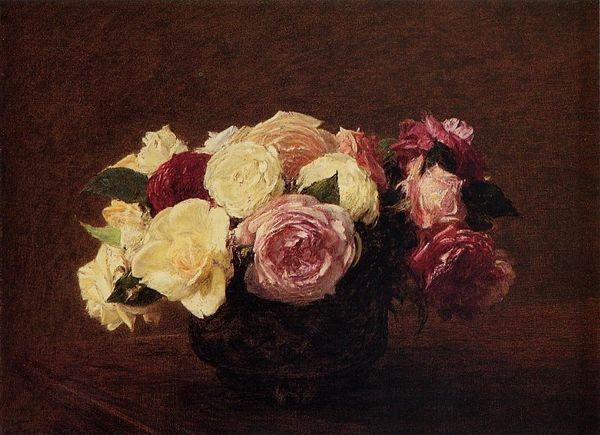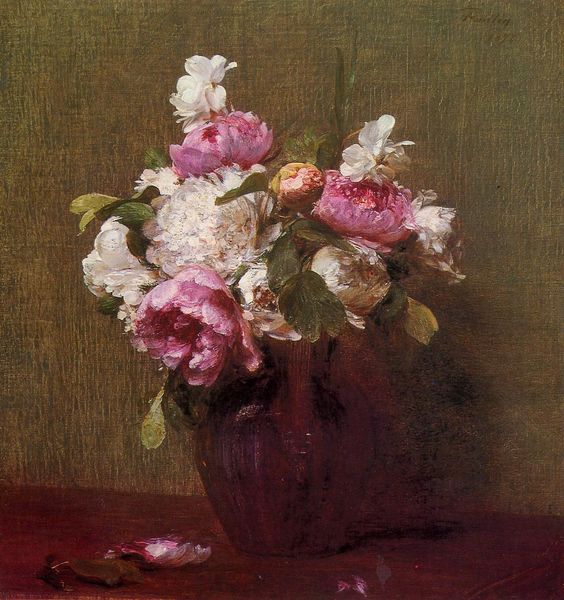
painting, oil-paint, photography
#
portrait
#
still-life
#
painting
#
oil-paint
#
flower
#
photography
#
oil painting
#
romanticism
#
realism
Copyright: Public domain
Curator: Ah, "Nice Roses," an oil painting of roses by Henri Fantin-Latour. Editor: There’s a softness to it. Muted, almost melancholic, but lovely in its arrangement. I am intrigued by the rough texture in the backround versus the detail in the flowers. Curator: Yes, it is quite delicate despite the dark ground. Latour was well-known for these floral studies. Beyond their aesthetic appeal, the flowers—especially roses—have, of course, accrued such a heavy symbolic weight over centuries of art history, literature, and broader culture. Here, the roses perhaps speak to transient beauty and love, a subtle vanitas perhaps. Editor: I’d say the artist captured that ephemeral quality, very nice visual semiotics, the romantic and realist styles work to together in that way, in its muted colors and somewhat softened forms. Note the masterful control of light; how it catches and highlights the petals, creating a sense of depth and dimension against an otherwise dark, somber backdrop. The artist draws attention to those little blooms in this painting. Curator: Consider also the Victorian era during which Latour created this painting. The flower held symbolic significance with almost its own lexicon for courtship, friendship, condolences, or even darker sentiments. Editor: Absolutely! It's also about line, form, texture, and color playing out on canvas—and of the dynamic arrangement of elements which carries meaning. It appears that the vase almost blends into the darkness and this compositional technique causes the viewer to center primarily on the beauty of the roses. Curator: The contrast does enhance them further and focuses attention on these complex blooms, doesn't it? A lovely painting! Editor: Indeed, it showcases how much depth there is even within something as seemingly simple as a still life.
Comments
No comments
Be the first to comment and join the conversation on the ultimate creative platform.
